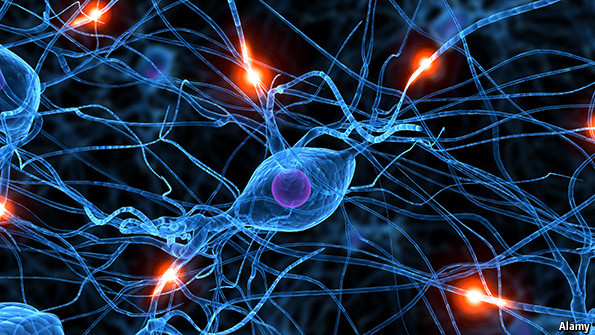One
way to ease into the moral relativism versus moral realism debate is to explain
how I came to be obsessed with it.
When I was in Grade 9, I was fortunate enough
to have had a fine teacher for science. He liked his subject, he liked kids,
and he liked bringing the two together, which is all a good teacher ever really
has to do. He impressed the thinking technique called the scientific method
deeply into my mind. You get an idea or you imagine a model of how some part of
the world around you works—how event A connects to event B. You think of a
practical, real-world way to test the idea. You set up the apparatus you need,
then you do the test. All the while, you keep careful records of what you
observe.
Next, you analyze the data to see whether
patterns exist that tend to support this theory or model of yours. You then
develop further ideas for subtler theories, models, or tests, and you keep on
researching. Sometimes you find a way to use your new insights about how the
universe works to create technologies that enable humans to live in better
health and happiness or in a little less pain. Once in a while, you find a way
to formulate one of the basic laws of this universe.
I could see that by using this method,
sharing their findings, and continuing their research, scientists had expanded
human knowledge, created so many helpful technologies, and cured diseases—all
in a steady march of progress. They had brought most of my way of life to its
current state—one that was far safer, more comfortable, and more interesting
than that known to any of my ancestors. Even at the youthful age of fourteen, I
was filled with a rush of emotion each time I realized not only what had been
accomplished but what might be still to come. It seemed to me then, and it
seems to me now, that we are destined for the stars.
On the other hand, between the ages of six
and eleven, I had spent most of my Sunday mornings attending Sunday school at
St. Stephen’s United Church. I felt similar profound emotions when I learned
about the Being who had created this universe and who loved everything in it.
My six-year-old heart ached when I thought about how so many human beings had
lost their relationship with God. The evidence was easy to see for myself.
Humans are not very moral or even logical most of the time. Even as a boy, I
could see this truth in events all around me, from the schoolyard to the Cold
War.
But I was uplifted when I was told of one man
who had explained to humans how they might strike a new deal: if they could learn
to truly love one another—to follow his example—then they could regain their
relationships with one another and, ultimately, their relationship with God.
The key concept to grasp was that following Jesus’s way was what mattered, not
whether he really was some kind of “divine“ being, and not whether the people I
met belonged to one particular group or sect. Love one another. Really love one
another. Then peace, progress, and prosperity will all come. All of this was
six-year-old naïveté, I admit. But as I look back even now, it seems more
profound than the beliefs of many adults because it was clear, heartfelt, and
unabashed.

Witnesses seeing the miracle at Fatima, Portugal, 1917.
Even as a child, I did not believe in “miracles”;
that is, events that lie beyond all rational explanation. I still don’t. Nor do
I believe in the divinity of Jesus. Or, to be exact, I believe he had a spark
of the divine in him, but so do all living things. He just had a lot more than
most of us. But he differed from us in degree, not type. And miracles? They
turn out to have rational explanations in the end.
I knew even as a child that the important
thing to understand was what the new deal Jesus offered humanity represented.
The principles being represented in the stories were what mattered, and they
seemed to me absolutely bang on. If we take into account all that we know at
this point in history, and we relentlessly apply our powers of reason to this
material, we can find a clear path to survival—that is, to humanity’s living
with decency, sense, and love. In other words, once a critical mass of humans
shares a model of reality that shows us how to fit into the natural world and
to get long-term, survival-oriented results there, by a few more millions in
each generation, humanity will choose to join the walk along that path.
Decency, sense, and love will prove fitter than cruelty and folly. Rational
persuasion will prevail.
My faith was not destroyed when I gained an
understanding of the scientific method. Nor was my passion for science
destroyed by my spiritual beliefs. The two clashed at times, my faith wavered
for a while, but as a man, I gradually worked out a way to integrate the two
and then to synthesize them into a new belief system—a single, unified,
coherent one, whose power to guide, nourish, and inspire is greater than any
power residing in our old science or our old religion alone could ever be.
The question in this Age of Science is “How?”
How can a rational human being in the modern era feel full, confident
allegiance to both of these ways of viewing our world and our place in it,
these two ways that are currently considered, by most people, to be
incompatible? The answer is that they are so far from incompatible that the
plural pronoun “they” does not work in this context. Only a single concept is
being discussed here. There is a way of understanding and reconciling all that
we know, a way that integrates it all, from our observations of events around
us to the memories stored in our brains to all the concepts we use as we strive
to understand what we see and recall, and then design effective responses to all
of it. In short, when correctly understood, science is religion.
This book is about what I call reasoned faith: a set of ideas that
connects science to morality and then to faith. I have worked out a system that
integrates all that we know and all that is justified, as science is, by
reasoning and evidence alone. This system is consistent with my deepest
instincts, with all the conceptual models used in science, and with all the
sense data and memories of sense data that lie between these poles of intuition
and reason.
In this book, I will construct an argument in
everyday language proving that the current belief about the incompatibility of
science and faith is wrong. My hope is that all readers who have struggled or
are still struggling with this dilemma, the biggest dilemma of our time, and
even those who claim to have committed themselves to one side of the debate or
the other and to have stopped thinking about the matter, will find resolution
by the end of the book.
I believe that all decisions to stop thinking
about this dilemma are deluded and unsustainable. Few of the jingoists, atheist
or theist, and even fewer of the discouraged ones in the middle—ever truly stop
thinking about the dilemma. Instead, they live in anxiety and return to it via the
pathways of daily experience again and again. I want to provide them all with a
way to solve it, not permanently but repeatedly, every time doubt assails them,
to work their way through doubts as they crop up in the flow of living and to
do so with growing confidence in a comprehensive system of thought that enables
them to do that work.
In philosophical terms, my main thesis is called
"deriving ought from is” which means finding a strong logical base for
moral values (the "ought" part) in the factual evidence of real life
(the "is" part). I will prove that a code of right and wrong exists,
embedded in the processes of the real world, and that we can figure out that
code simply by looking at the evidence in science, in history, and in our daily
lives. Further, I will show that once we recognize there is such a code—and we
see what that code is telling us about how a human life can and should be
lived—we are gradually and inescapably led to the conclusion that a God does
exist in this universe. A “sort of a God,” if you like. I’m content with the
term “sort of a God.” The more unique and personal the view of God that each
reader arrives at by time he or she has finished reading this book, the happier
I’ll be. That concept has to be personal, or in the end, it is nothing at all.
I have been mulling over this problem for
more than fifty years, from the time that I was a child, through a long career
teaching in the public school system, eight years of formal post-secondary
study, three degrees (two undergraduate, one graduate), stints in agriculture,
six rock bands, and business, time spent raising three kids, and a lot of life.
However, I feel all these experiences neither add to nor detract from my case.
They aren’t relevant. The case must stand on its own.
It is also worth noting that the ideas,
historical records, texts, and perspectives I discuss in this book are mostly
those of a man who was born into, and moulded by a Western culture. Certainly,
plenty of other usable perspectives are available in the world today. But I am
a son of the West. I can speak with at least some useful degree of conviction
only on the ideas and history I’ve learned about in my country and its schools.
However, the conclusions I draw in this book are universal; they can be extracted
by logic from the historical records and daily life circumstances of any
nation.
This book is an attempt to solve the dilemma
of our time. I think I’ve untangled that dilemma. My hope is that those who
stay with this book to the end will find that the reward—a thinking system that
enables them to organize all their ideas, professional, moral, and personal,
into one clear, consistent, coherent whole—will more than compensate for the
effort they have invested in reading the book in full.
I have to try.
Notes
1.
Emrys Westacott, “Moral Relativism,” International
Encyclopedia of Philosophy, 2012. http://www.iep.utm.edu/moral-re/#SH3b.
2.
Rachel Carson, Silent Spring (Mariner
Books, 2002).
3.
David Suzuki, The Sacred Balance (Greystone
Books, 1997).
4.
Albert Einstein, from a telegram to prominent Americans, May 24, 1946.
5.
David Hume, A Treatise of Human Nature,
2.3.3.4 (1739; Project Gutenberg).
https://www.gutenberg.org/files/4705/4705-h/4705-h.htm.











